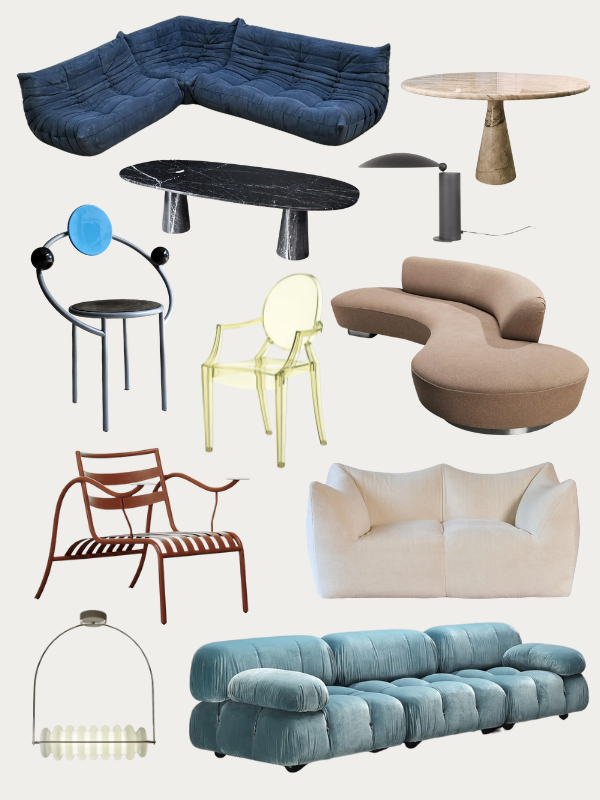At once playful, poetic, and architectural, Postmodern furniture has long been misunderstood as too bold or too eccentric for everyday living. But at Laura U Design Collective, we see it differently. The right Postmodern pieces infuse your space with personality, of course, but they also have surprising staying power. They bridge eras, balance restraint with irreverence, and—perhaps most importantly—bring a sense of design history into the home without sacrificing comfort or cohesion.
Whether you’re drawn to sculptural seating, expressive lighting, or quietly conceptual tables, these pieces prove that Postmodernism has more range than it’s given credit for. From French foam icons to Italian marble masterpieces, here are ten timeless designs that thrive in transitional, modern, and contemporary spaces alike. Let’s explore the forms that continue to inspire designers—and live beautifully—for decades.
10 Postmodern Furniture Pieces That Work in Transitional, Modern & Contemporary Interiors
Mario Bellini’s “Camaleonda” Sofa (1970/2020 Reissue)
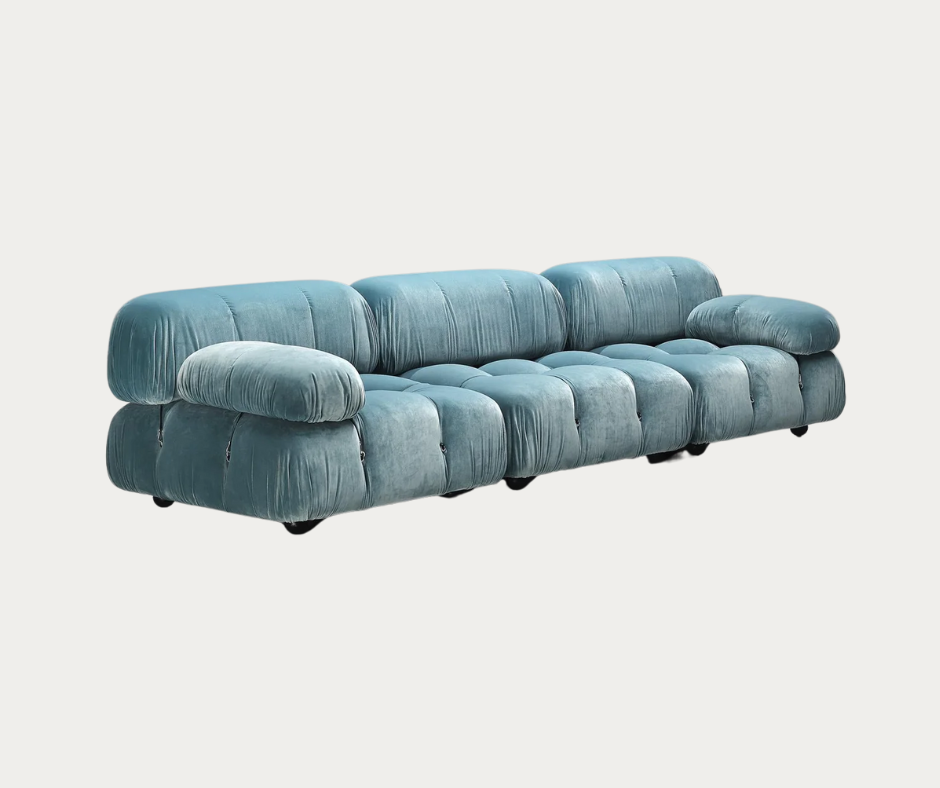
Modular by nature and incredibly inviting, Mario Bellini’s Camaleonda is sculptural but oh-so-comfortable. Originally designed in 1970 and revived for the 21st century by B&B Italia, this iconic sofa captures the essence of Postmodernism through its exaggerated curves and flexible structure. Bellini’s design transcends trends by allowing each configuration to adapt to the evolving rhythms of modern life.
The Camaleonda’s generous proportions, vibrant colors, and plush upholstery materials create a tactile experience that feels both luxurious and grounded. In transitional homes, it softens tailored architecture with a more relaxed sensibility. It becomes the room’s gravitational center in contemporary spaces—bold yet never overbearing. This piece is a space in and of itself.
Michel Ducaroy’s “Togo” Sofa (1973)
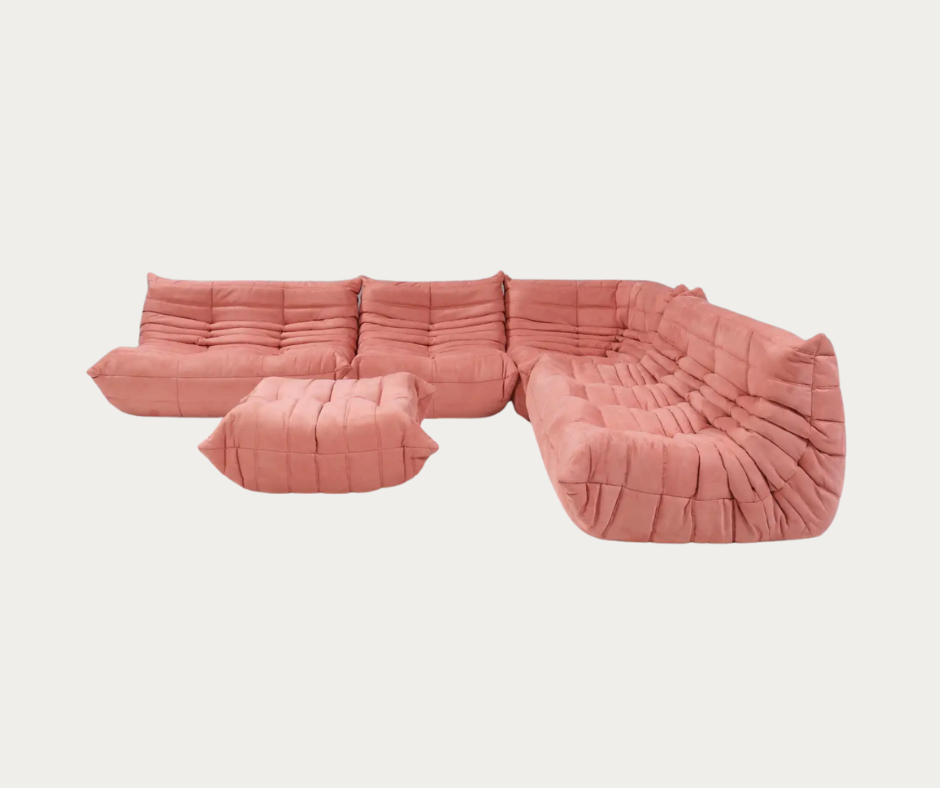
Few pieces are as simultaneously sophisticated and relaxed as Michel Ducaroy’s Togo. With its laid-back silhouette and sink-in comfort, this French design classic celebrates softness and informality. Though playful in form, its sculptural folds make it a natural fit for interiors that value art alongside utility—and today, nearly 50 years since its debut, Togo feels more relevant than ever.
Its origin story is as charming as its shape. One morning in the 1960s, Ducaroy stood at his sink and noticed how his aluminum toothpaste tube folded back on itself, “like a stovepipe closed at both ends.” That simple observation sparked a quick sketch, which became one of the most iconic seating designs of the 20th century. When the Togo debuted in 1973 for Ligne Roset—just a quilted, ground-hugging hunk of foam—audiences were skeptical. “People thought we forgot or didn’t have time to build a base,” said Antoine Roset in Architectural Digest. But Togo won the René-Gabriel prize for its blend of comfort, quality, accessibility, and radical form. The rest is history.
Today, the Togo enjoys cult status across generations—from Kelly Wearstler to Lenny Kravitz to a new wave of Instagram-savvy collectors. And for good reason. It’s low, luxurious, and endlessly reconfigurable. This piece is an inspiration to designers and homeowners alike; we completely understand its enduring popularity.
Vladimir Kagan’s “Serpentine” Sofa (1950s–1990s Iterations)
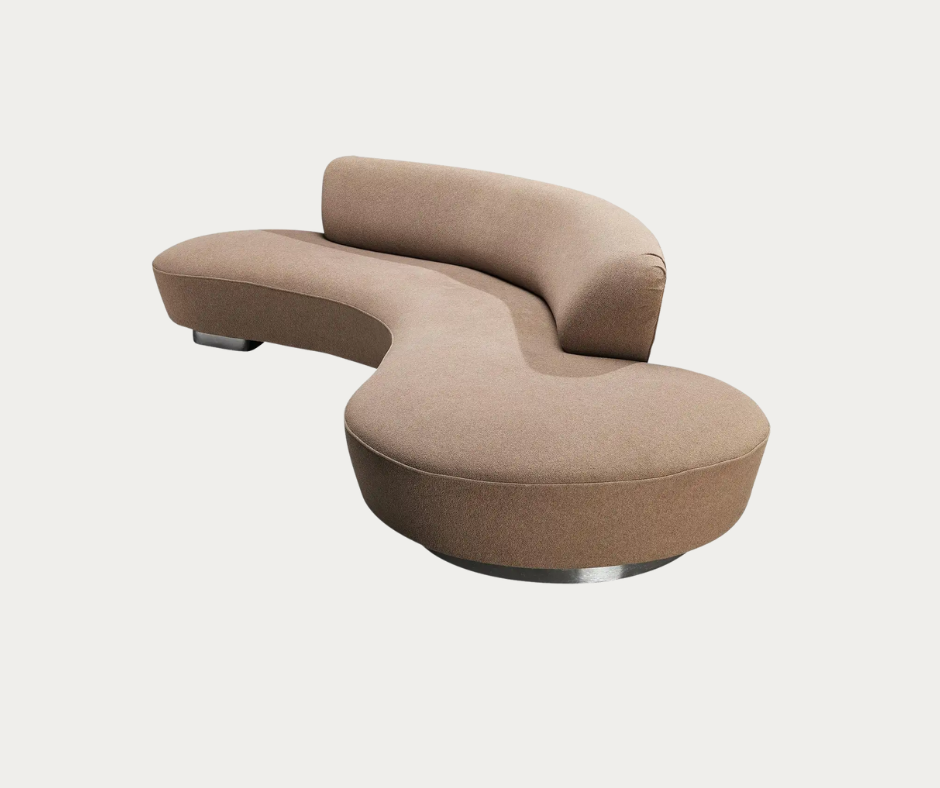
Vladimir Kagan’s Serpentine Sofa moves like a ribbon pulled across the floor—fluid, graceful, and unmistakably glamorous. First introduced in the mid-20th century and reinterpreted throughout the decades, it merges space-age inspiration with Art Deco curves, offering both drama and refinement.
This piece is especially compelling in rooms where structure and softness play off each other because the Serpentine Sofa brings a feminine energy and a sense of movement. Its sinuous form encourages conversation, lounging, and a deeper engagement with the room’s architectural flow.
Mario Bellini’s “Le Bambole” Sofa (1971)

If Camaleonda is Bellini’s structural masterpiece, Le Bambole is his poetic one. This low-slung, generously padded sofa feels like a cloud that has magically become tangible. Originally conceived in 1971 and still delighting designers today, its appeal lies in an ability to be both supremely casual and fashion-forward.
Le Bambole’s softness pairs beautifully with hard architectural elements—think stone fireplaces, panel molding, or steel-framed windows. It invites relaxation without sacrificing form and works especially well in tonal palettes of camel, taupe, and ivory. Modular, movable, and unmistakably chic, it blurs the lines between sculpture and upholstery.

Angelo Mangiarotti’s “Eros” Table for Skipper (1981)

Angelo Mangiarotti’s Eros table excels at both material expression and architectural restraint. Crafted without screws or joints, its marble top rests on conical legs through sheer precision and gravity. The result is a table that appears both monolithic and impossibly light—like it rose up from the ground within the space it inhabits.
The black Marquina version provides a visual weight that anchors a minimalist room or counterbalances plush upholstery like Le Bambole. In modern dining rooms, it reads as an intentional design moment. In transitional settings, its classical proportions and luxurious finish create a dialogue between old and new.
Angelo Mangiarotti’s M1 Dining Table (1970s)
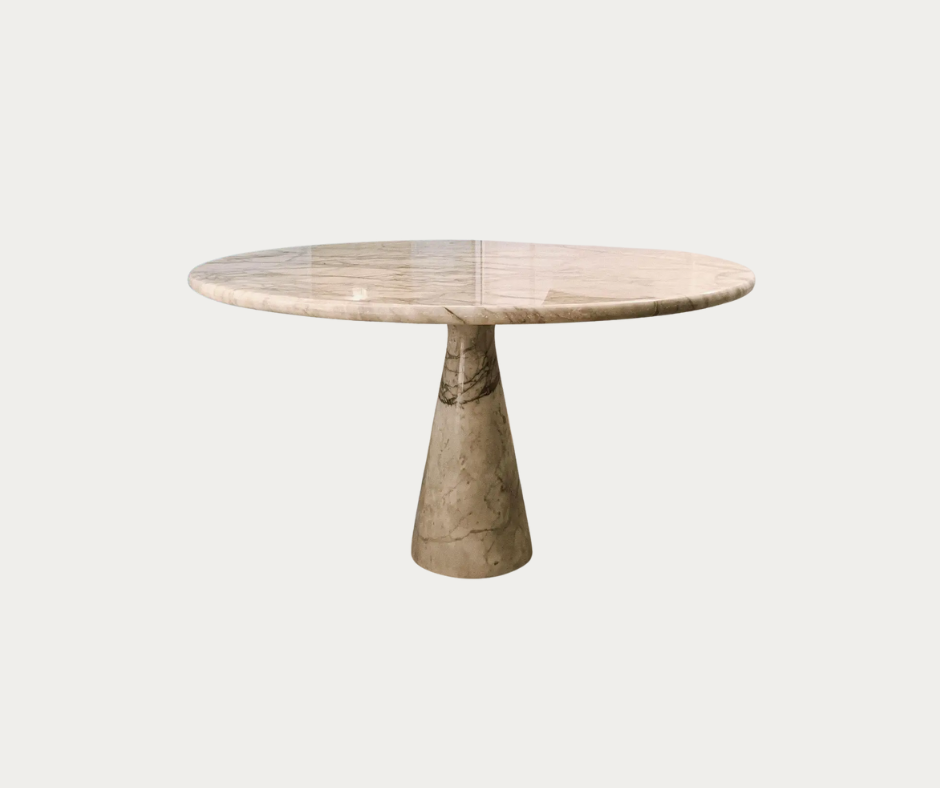
For a softer take on Mangiarotti’s architectural sensibility, the M1 table is quietly strong and a bit more feminine. Its flared pedestal base and creamy off-white marble soften the sculptural logic that defines his work. Less overt than the Eros, it blends seamlessly into interiors that value warmth and restraint.
Perfect beneath a statement light fixture, atop layered rugs, or as a serene workspace in an executive office, the M1 is calm and collected. Paired with suede, chrome, or natural wood chairs, it is a sculptural centerpiece that elevates without overwhelming. It’s Postmodernism in its most meditative form.
Ettore Sottsass’s “Bruco” Chandelier (1970)
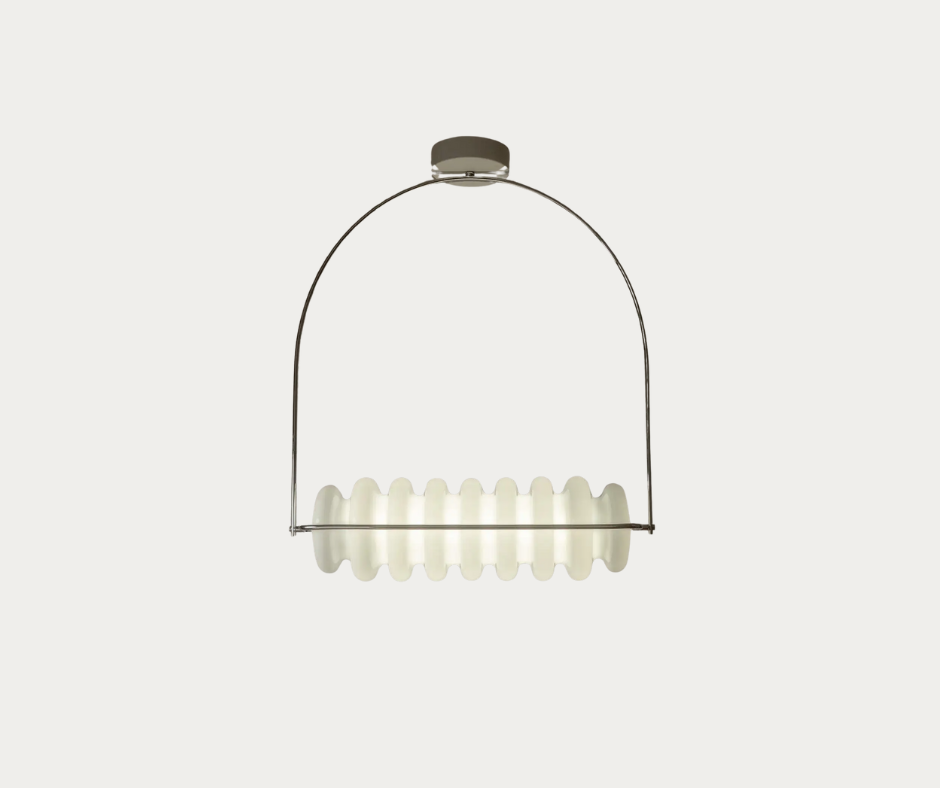
True to form, Ettore Sottsass delivers complexity with clarity in the “Bruco” chandelier. This rare lighting piece from 1970 is deceptively simple—its linear, silver chrome structure and diffused methacrylate glow speak to both Bauhaus precision and Postmodern whimsy. Now updated to accommodate LED lighting, it bridges the past and present seamlessly.
Whether suspended above a dining table or hovering over a workspace, Bruco creates a geometric counterpoint to organic forms like the Serpentine Sofa or Le Bambole. It’s sculptural without being loud, conceptual without feeling cold. We love how it mirrors the American Postmodernist philosophy from all the way across the world in Italy.
Jean-Michel Wilmotte’s “Washington” Lamp (1985)
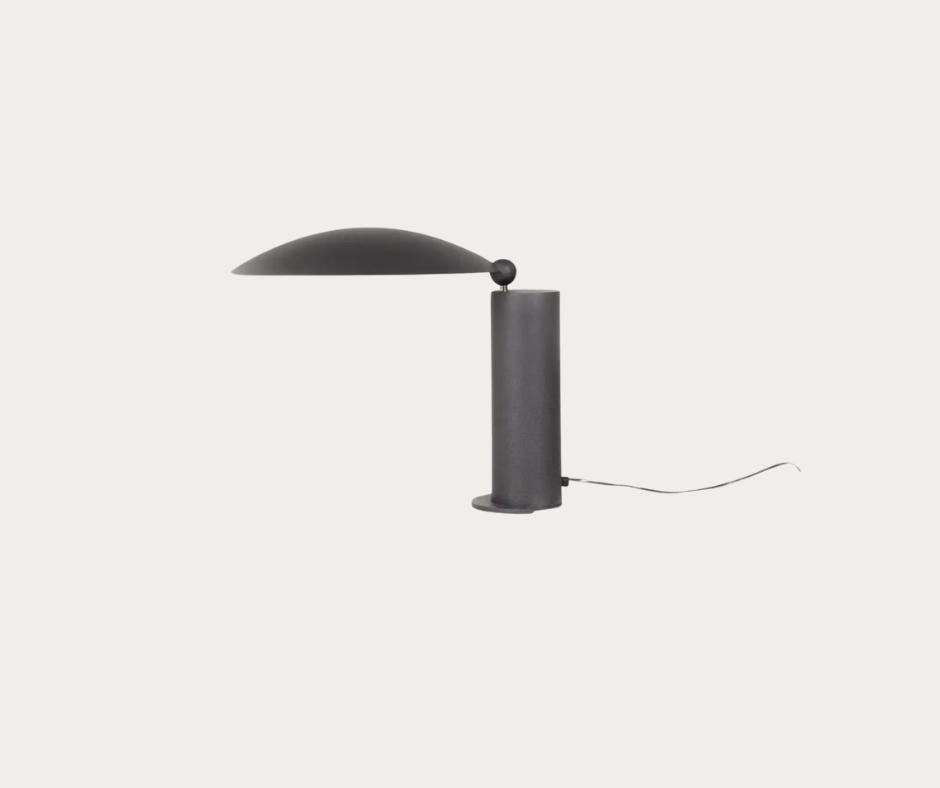
Designed by architect Jean-Michel Wilmotte for Lumen Center Italia, the Washington Lamp is precise, industrial, and one of our favorite desk lamps of all time. Originally created in the early 1980s for the French Embassy in Washington, D.C., the lamp merges functional clarity with sculptural presence. A lacquered steel frame supports a clean-lined diffuser, anchored by a spherical joint that allows for 360-degree rotation—a detail that feels both technical and poetic.
What we love most about the Washington Lamp is how seamlessly it blends into any interior language. In a transitional space, it acts as a sleek counterbalance to more classic lines. In a modern setting, it feels like a thoughtful architectural accent. It brings light, yes—but also a sense of intention. Pair it with marble, natural oak, or chrome for a layered, lived-in look that still feels edited and resolved.
Philippe Starck’s “Louis Ghost” Chair (2002)

A modern reinterpretation of the Louis XVI silhouette, Starck’s Ghost Chair is both playful and paradoxical. Made of transparent polycarbonate in a variety of pastel shades, it captures the elegance of the past while fully embracing the materiality and minimalism of the future. It’s a Postmodern wink that feels perpetually relevant.
In smaller rooms, the Ghost Chair’s invisible footprint is a space-saver with style. In larger rooms, it adds levity and charm. Whether pulled up to a desk, flanking a console, or surrounding a marble dining table, it blends into every program while always making an impression. We love it as a vanity chair.
Michele de Lucchi’s “First” Chair (1983)
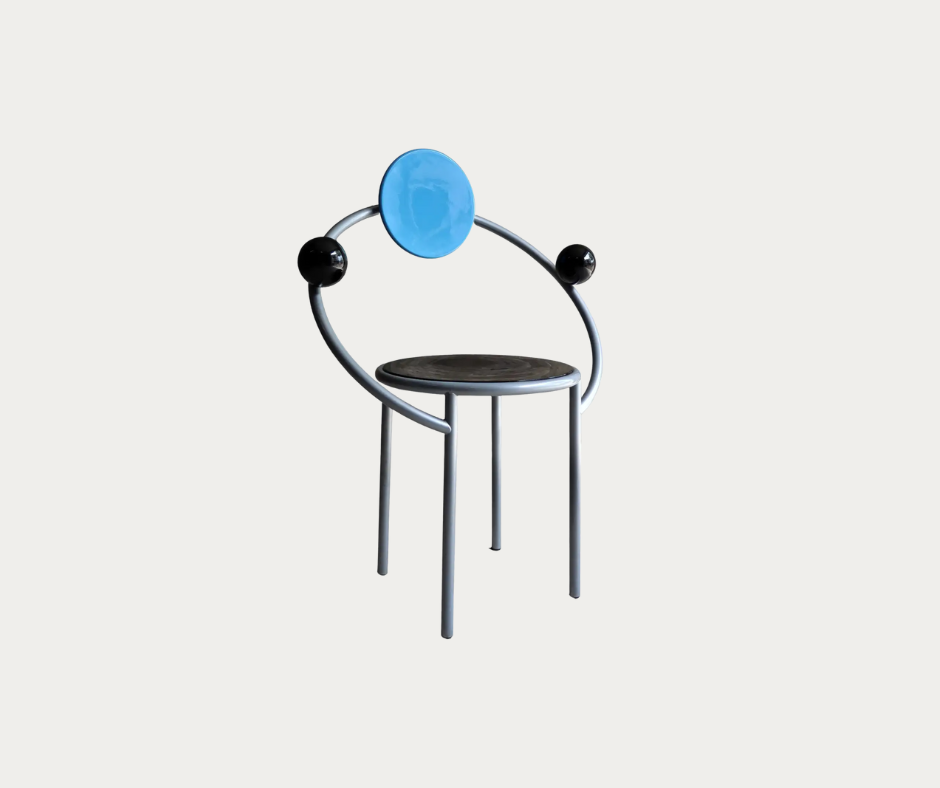
With its angular geometry and vibrant palette, Michele de Lucchi’s “First” Chair feels like a Bauhaus experiment turned theatrical. Though originally designed for the Memphis Group (Memphis Milano), its bold proportions and graphic sensibility lend it surprisingly well to modern interiors that crave a dose of personality.
This chair works beautifully in an entryway, a creative studio, or next to a low sculptural table. In neutral rooms, punctuates; in eclectic ones, it holds its own. “First” is Postmodernism with a sense of humor and a clear point of view.
Jasper Morrison’s“Thinking Man’s Chair” (1986)

Jasper Morrison’s “Thinking Man’s Chair” is as much a philosophical statement as it is a place to sit. Produced by Cappellini in 1986, its tubular steel frame and exaggerated circular arms embody Morrison’s concept of “super normal” design—subtle, clever, and unburdened by decoration.
Its visual simplicity makes it a seamless addition to transitional and modern interiors alike. Use it to anchor a reading corner or let it breathe beside a window and marble pedestal. Better yet, put it outside! It’s ideal for loggias, poolside lounges, and covered patios. This chair quietly critiques overdesign while (ironically) evolving into an iconic piece itself.

Furnish Your Home with Custom and Iconic Pieces
At Laura U Design Collective, we believe great design is timeless. Whether you’re sourcing your first Postmodern icon or preserving a family heirloom, we’re here to help you create an interior that lasts.
Our team curates stunning pieces, reupholsters vintage icons, and designs custom furnishings that speak to you. If you dream of a home that layers history with modernity—one that feels intentional, elevated, and entirely yours—we’d love to create it with you. Let’s design something unique together.


